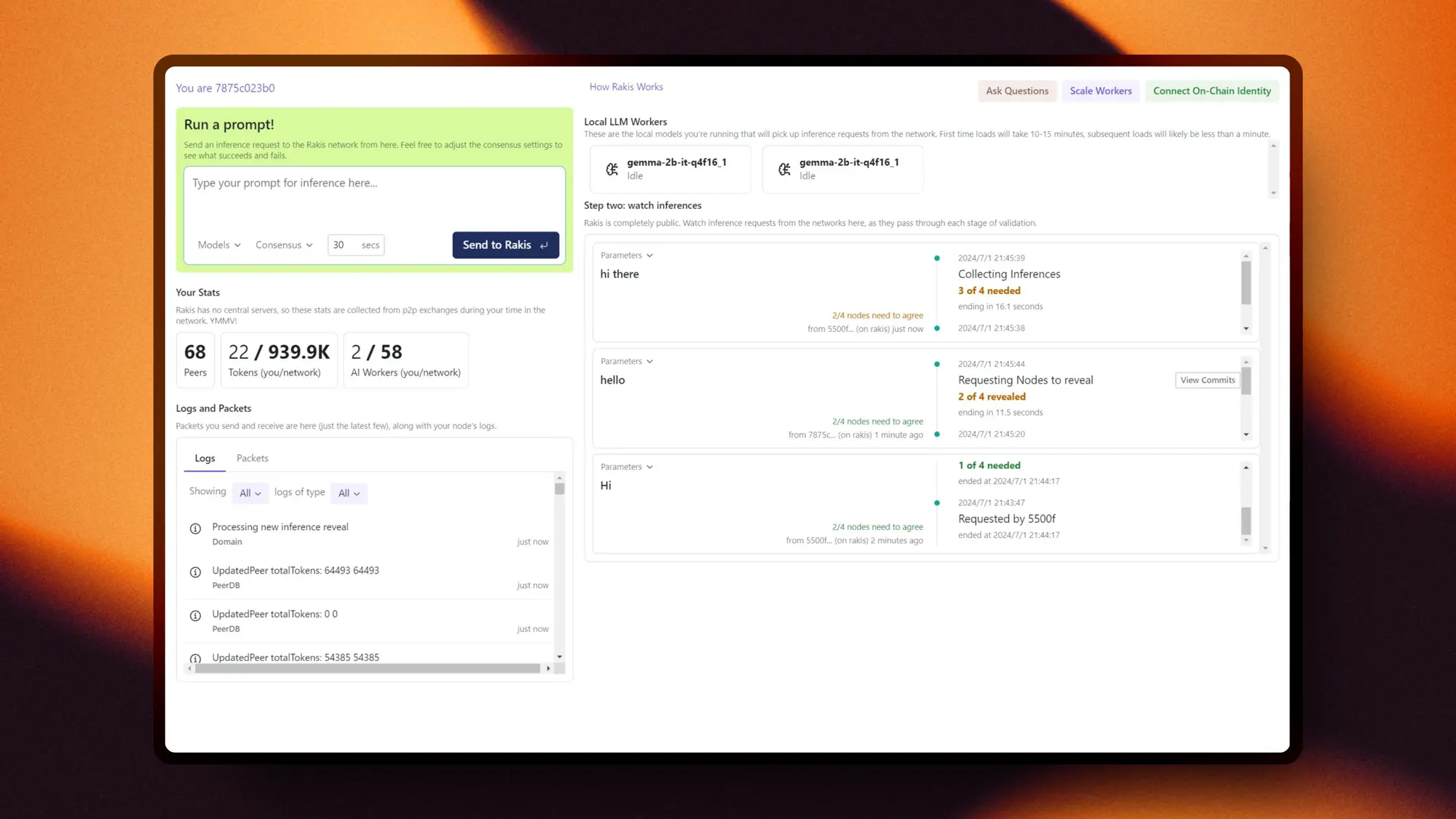
Rakis is an innovative P2P LLM inference network that runs entirely within the browser. It introduces a new paradigm for artificial intelligence inference, offering users a unique experience and advantages.
The core feature of Rakis lies in its ability to distribute and execute artificial intelligence inference tasks on a peer-to-peer network. This means that it does not rely on centralized servers, thus avoiding the single points of failure and performance bottlenecks that traditional centralized architectures may bring. By utilizing this distributed approach, Rakis can make full use of the computing resources of various nodes in the network, enhancing the efficiency and reliability of inference task execution.
When using Rakis, users can choose the appropriate model according to their needs and send content to other nodes for inference. At the same time, the user's node will also accept inference tasks from other nodes. This two-way interaction makes the entire network more efficient and collaborative. For example, when a user needs to perform sentiment analysis on a piece of text, they can select the appropriate sentiment analysis model and send the text to other nodes in the network for inference. At other times, their node will also help with inference tasks for other users.
Additionally, users can earn Tokens by contributing to the network's inference tasks while idle. This incentive mechanism encourages more users to participate in the network and contribute their computing resources to artificial intelligence inference tasks. However, the number of Rakis nodes is currently limited, which may affect its performance and availability to some extent. But as time goes on and the user base grows, the network is expected to become increasingly powerful.
The main advantage of Rakis is its low barrier to entry. Users can start using this network for artificial intelligence inference as soon as they open their browser, without the need for complex installation and configuration processes. This is very user-friendly for those who do not have professional technical knowledge. Moreover, Rakis is likely designed to accommodate users with low memory, with the largest model being only Llama3 8B. Although the model size is relatively small, it is sufficient to meet the needs of users with simple inference tasks and low resource requirements.

